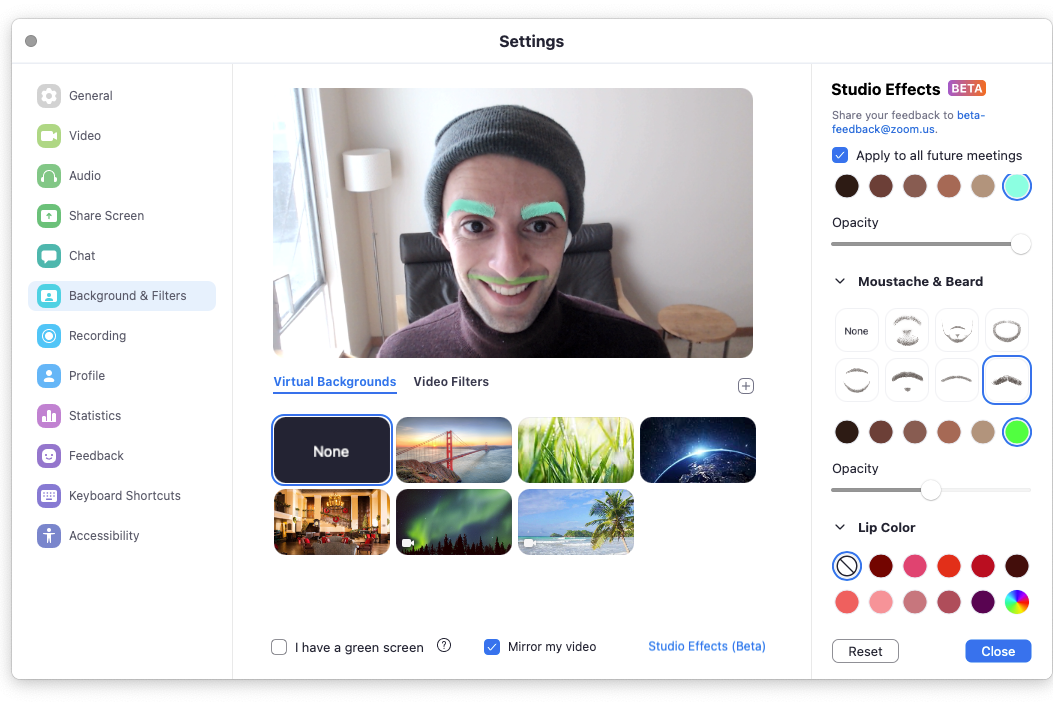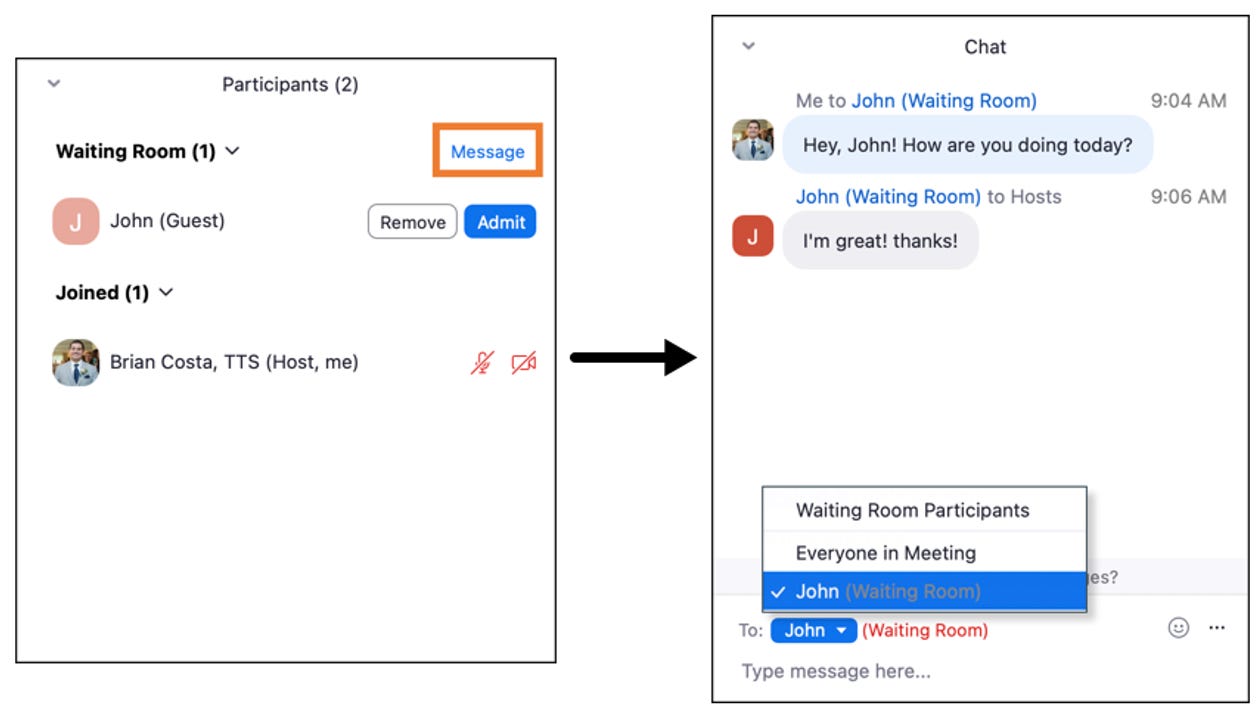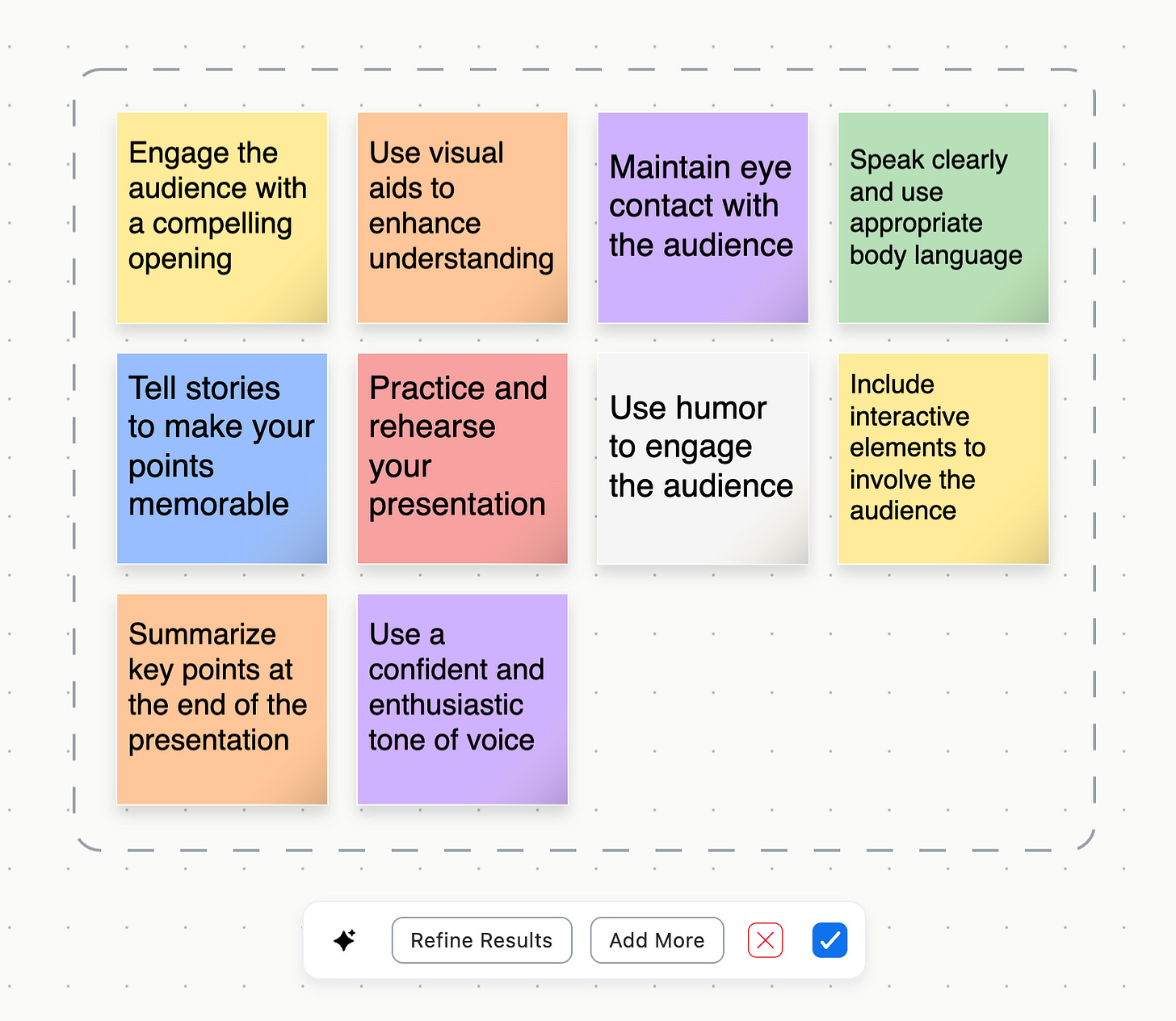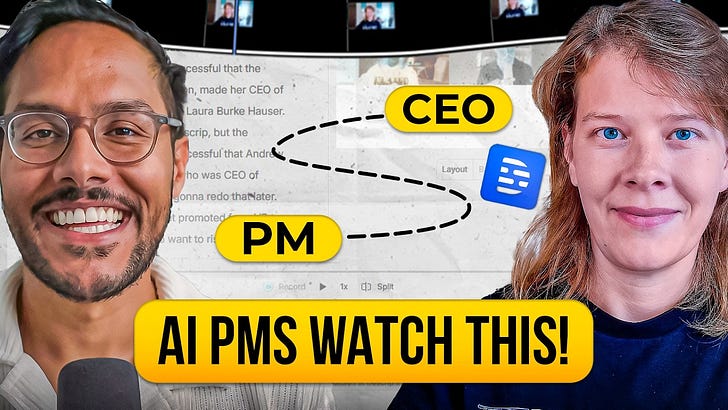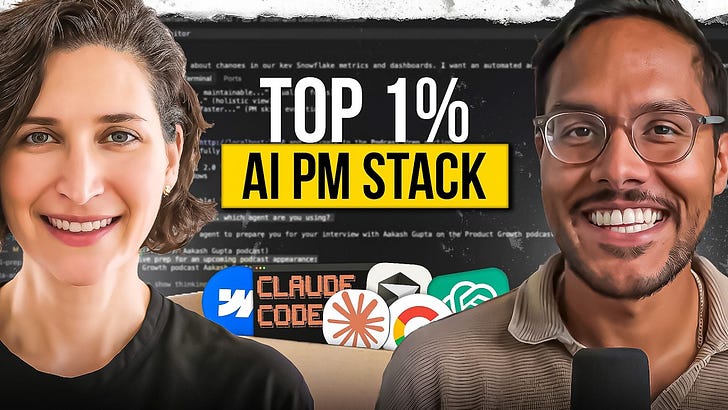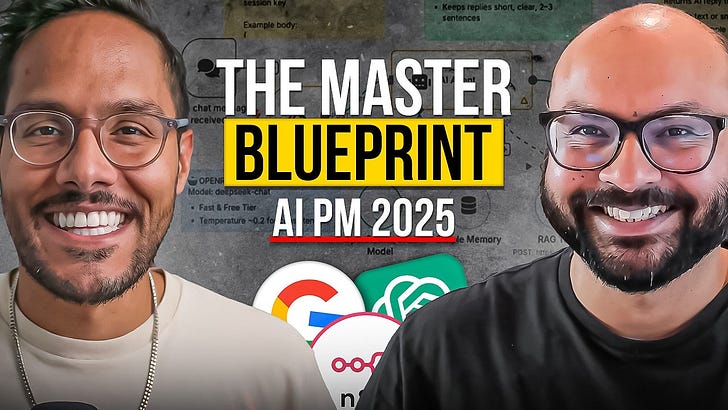Check it out on Apple, Spotify, or YouTube.
Brought to you by:
Jira Product Discovery: Plan with purpose, ship with confidence
The AI Evals Course for PMs & Engineers: You get $800 with this link
AI PM Certification: Get $500 off Miqdad Jaffer (of OpenAI)’s certification
Today’s Episode
We have a treat for today’s episode. We’re going deep inside Zoom with their former Head of Meetings Product and now Head of Live Events and Webinars Product, John Beckmann.
We cover:
How Zoom scaled from 20 to 200+ PMs during a global crisis
What to expect if you're interviewing as a PM at Zoom now
The unique aspects of how they build product
How to use Zoom like a pro
Zoom’s AI future
If you use Zoom or are interested in their growth, this episode is for you (seriously, you don’t want to miss John’s tips on using Zoom well):
1. How Zoom Took Over the World
When John joined Zoom in January 2020, the company was already well-positioned but nobody foresaw the tsunami of growth about to hit.
In just a few months, Zoom’s revenue exploded from $1B to $4.5B, user volume skyrocketed, and the product team ballooned from 20 to over 200 PMs.
All this while onboarding a global user base overnight.
So how did they survive the chaos?
One key decision: a three-month feature freeze at the peak of the COVID shift. Instead of pushing new features, Zoom zeroed in on reliability, security, and critical issues for teachers, enterprises, and new users.
Eric Yuan (Zoom CEO) led daily war rooms with exec staff and product leads to triage problems in real time.
John recalls the psychological toll of those early days - reacting fast, firefighting around the clock, and scaling teams in a context where “mistakes weren’t just bugs - they could break people’s workdays.”
Despite the chaos, Zoom’s platform held up. Zoom became the default infrastructure for global communication in 2020.
2. Interview Tips at Zoom
If you’re applying for a role at Zoom - especially in product - you’ll want to approach the interview like you’re already part of the team.
Here’s what I took away from how they think:
2.1 Use Zoom’s features like a Zoomer…
Know the platform. Use its strengths. But don’t go overboard.
He recommends subtlety - a virtual background or good lighting is fine. But using avatars or filters while interviewing? That’s a gamble.
This is a chance to show that:
You’ve actually used Zoom’s AI Companion or meeting summaries.
You understand their UI and philosophy (usability > complexity).
You know the product well enough to give thoughtful suggestions if asked.
2.2 Expect values-aligned questions.
Zoom values:
Speed with thoughtfulness
Root cause mindset
User empathy over shiny features
Fast, reliable iteration
So choose stories where you:
Shipped fast under pressure
Simplified a complex UX
Designed based on user pain vs internal goals
Identified a hidden root cause behind a surface bug
…you’re going to stand out.
3. How Zoom Builds Products
Zoom’s product engine scaled fast but not without pain.
John shares that during the pandemic surge, they weren’t just building features, they were firefighting. Thousands of feature requests. Bug escalations daily. UI problems amplified by usage scale.
It wasn’t just a to-do list anymore. It was avalanche-level chaos.
To manage this, he built a system of buckets to organize incoming requests by type - feature, bug, UI friction, etc. He layered that with tooling to track priorities and progress across hundreds of items.
One of the most important principles he emphasized: “Root cause thinking”
With so many incoming issues, it’s tempting to slap patches and move on. But he pushed for going deeper asking why something broke or why a behavior kept surfacing.
Because sometimes it’s not the bug you see, it’s the broken assumption beneath it.
And unless you fix that, it’ll surface again in another form.
Zoom also embedded product managers deeply into feedback loops:
Triaging feature requests through formal pipelines
Pulling insights from social media, forums, in-product surveys
Keeping PMs in live contact with customers and support teams
Fast iteration cycles - a feature suggestion could ship in weeks
And even small features got deep thought like the “Raise Hand” tool, which evolved to include host controls, order queues, and dismiss logic.
4. How to Use Zoom Like a Pro
John walked through his favorite Zoom features that most people aren't using to their full potential. Here's what you're missing:
4.1 Master the Advanced Audio/Video Controls
Beyond basic mute/unmute, dive into the audio/video submenu for game-changing features:
Virtual backgrounds and avatars - Not just for fun. Use them strategically when you need a break from video but want to stay present in the meeting
Studio effects and video filters - Zoom's lighting enhancement genuinely makes you look more professional
Avatar movement tracking - When your video is on, avatars move with your head movements. When off, they create subtle motion that's psychologically better for other participants than a static "video off" box
4.2 Chat Like a Power User
Most people only use the main meeting chat, but there's more:
Create new chats during meetings for side conversations with specific participants
Separate group chat from individual chats - keep the main discussion flowing while handling specific questions privately
Reactions with effects - Use "send with effect" for more engaging responses in larger meetings
4.3 Collaboration Tools That Replace Other Apps
Zoom Docs: Create collaborative documents directly in meetings. Other participants can edit in real-time, and docs persist after the meeting ends. John uses this for everything from meeting notes to organizing hundreds of product requests.
Zoom Whiteboard: Far beyond the basic drawing tool. It's a full collaborative canvas (with AI) you can use for:
Boxes and arrows diagrams (John's go-to for explaining concepts)
Real-time brainstorming where everyone can contribute
Visual specs that evolve during the meeting and become part of documentation
4.4. AI Companion - Your Meeting Superpower
Turn on AI to unlock these capabilities:
"Catch me up" - Join late? Get an instant summary of what you missed
Free-form questions - Ask the AI about anything discussed in the meeting
Private queries - Your AI interactions are private unless you choose to share responses
Meeting summaries - Automatically generated after meetings, with action items and key decisions
4.5. Workflow Optimization
Keyboard shortcuts: Master audio/video toggles and interface navigation for seamless meeting-to-meeting transitions.
Calendar integration: Use the right-hand panel in the Zoom client to see upcoming meetings. Connect your calendar or use Zoom Calendar for one-click meeting access.
Meeting management:
Polls and quizzes for formal presentations
Raise hand with order tracking - hosts can see the sequence and manage questions systematically
Customizable toolbar - reorder icons based on your most-used features
The key insight from John: don't just use Zoom for basic video calls. The collaboration tools can replace multiple other apps and make meetings genuinely productive rather than just informational.
Most powerful underused feature according to John: AI Companion and meeting summaries. "If you're not leveraging those, you're definitely missing out. They're very, very powerful, very accurate, and a tremendous addition to the meetings product."
5. The Future of Zoom
While Zoom dominated synchronous communication during the pandemic, the company is now looking far beyond 1:1 calls.
Three big directions are emerging:
5.1. AI Integration
Zoom’s biggest post-pandemic release? The AI Companion, a tool that:
Auto-generates meeting summaries
Helps latecomers “catch up”
Surfaces action items and decisions
Internal usage has grown rapidly and he recalls it “the most impactful thing we’ve shipped.” He believes AI will drive the next leap in productivity by turning meetings into searchable, useful artifacts.
5.2. Avatars & Presence
Not every innovation is futuristic. Some solve today’s pain: being in 6 hours of meetings with no lunch break.
Zoom’s avatar system lets users “show up” even when they turn off video, adding subtle animations that reduce cognitive friction for others in the meeting.
5.3. Live Events & Broadcasts
Zoom is making a hard push into broadcast-quality events:
Expanded their Webinars product
Built Zoom Events for pro marketers/trainers
Launched Production Studio (a no-code pro production tool)
Acquired Liminal to enable high-end event production
This shift moves Zoom from “calls” to “platform for digital communication at scale.”
Related
Newsletters:
How Notion Grows - The history, PLG tactics, and strategy
How Figma Grows - How to go from 0 to $10-20B in 12 years
How Miro Grows - Tactical Lessons From The $17.5B Whiteboard
Podcasts:
How ZoomInfo IPO’d - With CEO/ Founder Henry Shuck
How LogRocket Became a $100M+ AI Company - With CEO/ Founder Matt Arbesfeld
How Amplitude Became the #1 Product Analytics Tool - With CEO/ Founder Spenser Skates
Where to Find John
If you prefer to only get newsletter emails, unsubscribe from podcast emails here.
If you want to advertise, email productgrowthppp at gmail.
P.S. More than 85% of you aren't subscribed yet. If you can subscribe on YouTube, follow on Apple & Spotify, my commitment to you is that we'll continue making this content better and better.



